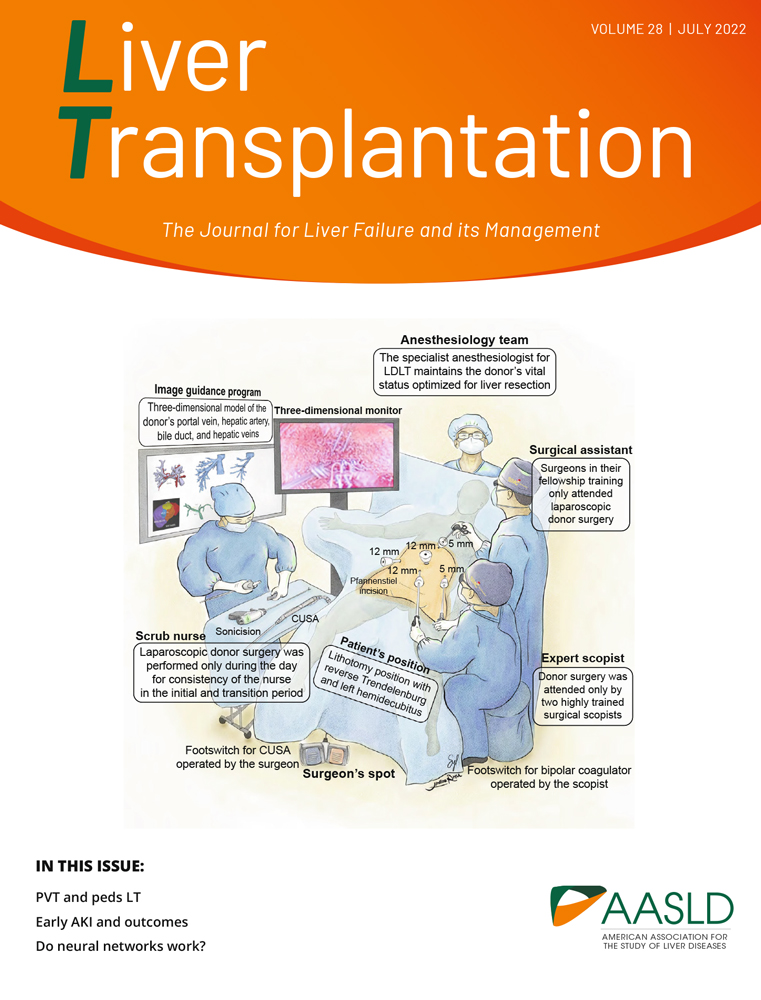Use of neural network models to predict liver transplantation waitlist mortality
Shunji Nagai and Anubhav Reddy Nallabasannagari contributed equally to this study.
SEE EDITORIAL ON PAGE 1128
Abstract
Current liver transplantation (LT) organ allocation relies on Model for End-Stage Liver Disease–sodium scores to predict mortality in patients awaiting LT. This study aims to develop neural network (NN) models that more accurately predict LT waitlist mortality. The study evaluates patients listed for LT between February 27, 2002, and June 30, 2021, using the Organ Procurement and Transplantation Network/United Network for Organ Sharing registry. We excluded patients listed with Model for End-Stage Liver Disease (MELD) exception scores and those listed for multiorgan transplant, except for liver–kidney transplant. A subset of data from the waiting list was used to create a mortality prediction model at 90 days after listing with 105,140 patients. A total of 28 variables were selected for model creation. The data were split using random sampling into training, validation, and test data sets in a 60:20:20 ratio. The performance of the model was assessed using area under the receiver operating curve (AUC-ROC) and area under the precision-recall curve (AUC-PR). AUC-ROC for 90-day mortality was 0.936 (95% confidence interval [CI], 0.934–0.937), and AUC-PR was 0.758 (95% CI, 0.754–0.762). The NN 90-day mortality model outperformed MELD-based models for both AUC-ROC and AUC-PR. The 90-day mortality model specifically identified more waitlist deaths with a higher recall (sensitivity) of 0.807 (95% CI, 0.803–0.811) versus 0.413 (95% CI, 0.409–0.418; p < 0.001). The performance metrics were compared by breaking the test data set into multiple patient subsets by ethnicity, gender, region, age, diagnosis group, and year of listing. The NN 90-day mortality model outperformed MELD-based models across all subsets in predicting mortality. In conclusion, organ allocation based on NN modeling has the potential to decrease waitlist mortality and lead to more equitable allocation systems in LT.
CONFLICT OF INTEREST
Anubhav Reddy Nallabasannagari is employed by RediMinds Inc. Dilip Moonka advises and is on the speakers’ bureau for Gilead and AbbVie. He is on the speakers’ bureau for Intercept.




